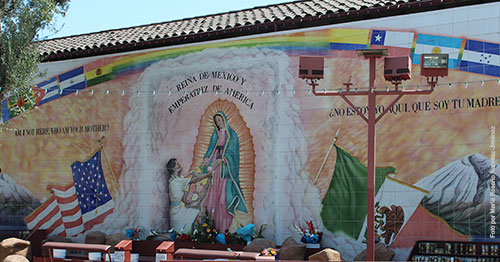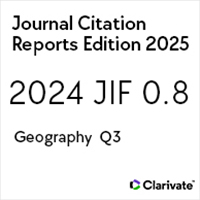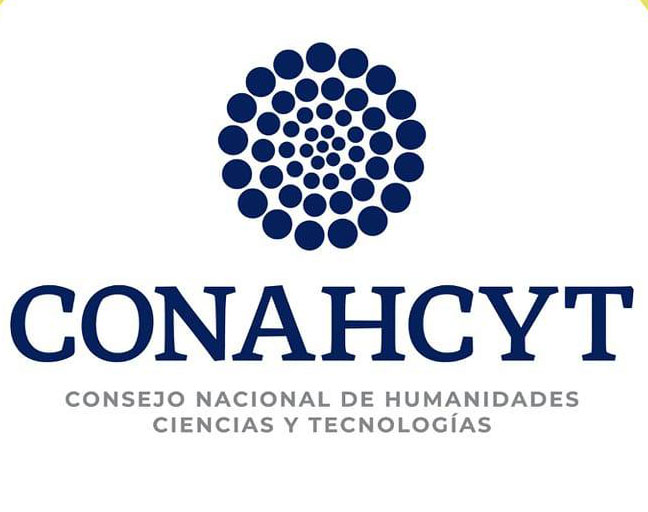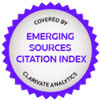Ethnic self-identification of second-generation youth of Mexican origin in California
Autoidentificaciones étnicas de jóvenes de segunda generación de origen mexicano en California
https://doi.org/10.21670/ref.2020062
Keywords:
self-identification, second generation, life stories, migrantAbstract
The aim of this article is to explore the ethnic self-identifications of second-generation young people of Mexican origin. To do so, three elements are taken from the American socio-political context that is related to their self-identifications: the identity model of the American, the social imaginary of the Mexican and the census categories of Hispanic/Latino ethnicity and race. The biographical approach, specifically Daniel Bertaux's ethno-sociological perspective through life stories, has been the technique used. The research was carried out during 2016, in Southern California where 51 young people were interviewed. The accounts show that some of the institutional categories end up being part of the self-identifications of the informants, or the informants attribute to themselves many of the phenotypical and/or racial characteristics that are attributed to those categories. The limitation is that it is not possible to include other stories.Resumen
El objetivo de este artículo es explorar las autoidentificaciones étnicas de los jóvenes de segunda generación de origen mexicano. Para ello se toman tres elementos del contexto sociopolítico estadounidense que se encuentra en relación con sus autoidentificaciones, estas son: el propio modelo identitario estadounidense, el imaginario social sobre el mexicano y las categorías censales sobre la etnicidad hispana/latina y la raza. El enfoque biográfico, concretamente la perspectiva etnosociológica de Daniel Bertaux a través de los relatos de vida, ha sido la técnica empleada. La investigación se llevó a cabo durante 2016, en el sur de California donde se entrevistó a 51 jóvenes. Los relatos constatan que algunas de las categorías institucionales llevan a que sean parte de las autoidentificaciones de los informantes, o estos se adjudican muchas de las características fenotípicas y/o raciales que se les atribuyen a dichas categorías. Como limitación se encuentra la imposibilidad de incluir otros relatos.References
Alba, R. & Nee, V. (1997). Rethinking Assimilation Theory for a New Era of Immigration. The International Migration Review, 31(4), 826-874. DOI: https://doi.org/10.1177/019791839703100403
Alba, R. & Nee, V. (2003). Remaking the American Mainstream: Assimilation and Contemporany Immigration. Harvard University Press. DOI: https://doi.org/10.4159/9780674020115
Aparicio, R. (2007). Las “segundas generaciones” en España: marroquíes, dominicanos, peruanos. Cuadernos Europeos de Deusto, (36), 19-56.
Arendt, H. (2009). Escritos judíos. Paidós.
Barth, F. (Comp.). (1976). Los grupos étnicos y sus fronteras: La organización social de las diferencias culturales. Fondo de Cultura Económica.
Bertaux, D. (1999). El enfoque biográfico: Su validez metodológica y sus potencialidades. Proposiciones 29, 1-23. DOI: https://doi.org/10.22201/fcpys.24484938e.2011.56.29458
Bertaux, D. (2005). Los relatos de vida. Perspectiva etnosociológica. Ediciones Bellaterra.
Comaroff, J. & Comaroff, J. L. (1992). Theory, ethnography, historiography. San Francisco, Oxford: Westview Press, Boulder.
Consejo Nacional para Prevenir la Discriminación. (2010, abril). Encuesta Nacional sobre Discriminación en México. http://www.conapred.org.mx/index.php?contenido=pagina&id=424&id_opcion=436&op=436
Denzin, N. K. (1970). The Research Act. Aldine.
Durand, J. (2017, 16 de abril). De migrantes a criminales. La Jornada en línea. https://www.jornada.com.mx/2019/04/14/opinion/013a2pol
Ennis, S., Ríos-Vargas, M. & Albert, N. G. (2011). The Hispanic Population: 2010. U.S. Department of Commerce, Economics and Statistics Administration, U.S. Census Bureau. https://www.census.gov/library/publications/2011/dec/c2010br-04.html
Epstein, A. L. (2006). Etnicidad e identidad. En M. Camus (Coord.), Las ideas detrás de la etnicidad. Una selección de textos para el debate (pp. 86-116). Centro de Investigaciones Regionales de Mesoamérica.
García Borrego, I. (2008). Herederos de la condición inmigrante: Adolescentes y jóvenes en familias madrileñas de origen extranjero (tesis de doctorado). Universidad Nacional de Educación a Distancia. http://espacio.uned.es/fez/eserv/tesisuned:CiencPolSoc-Igarcia/Documento.pdf
Geertz, C. (1973). La interpretación de las culturas. Gedisa.
Hall, S. (1996). Introducción ¿Quién necesita "identidad"? En S. Hall & P. du Gay (Comps.), Cuestiones de identidad cultural (pp. 13-39). Amorrortu editores.
Hixson, L., Hepler, B. B. & Ouk Kim, M. (2011). The White Population: 2010. U.S. Department of Commerce, Economics and Statistics Administration, U. S. Census Bureau. https://www.census.gov/library/publications/2011/dec/c2010br-05.html?sec_ak_reference=18.0519ae8c.1581537036.14b8cd77
Huntington, S. (2004). El reto hispano. FP: Foreign Policy-Edición Española, (2). https://www.ulima.edu.pe/sites/default/files/page/file/el_reto_hispano.pdf
Mercado, A. (2013). Subtractive citizenship and transnational indigenous resistance: Indigenous Mexicans in San Diego. Journal of Transborder Studies. Research and Practice.
Omi, M. & Winant, H. (2015). Racial formation in the United States. Routledge. DOI: https://doi.org/10.4324/9780203076804
Parker, K., Menasce, J., Morin, R. & Lopez, M. H. (2015). Chapter 7: The Many Dimensions of Hispanic Racial Identity. Pew Research Center https://www.pewsocialtrends.org/2015/06/11/chapter-7-the-many dimensions-of-hispanic-racial-identity/
Perlman, J. & Waldinger, R. (1997). Second generation decline? Children of immigrants, past and present. A reconsideration. International Migration Review, 31(4), 1415-1430. https://doi.org/10.1177%2F019791839703100405 DOI: https://doi.org/10.2307/2547418
Portes, A. & Rumbaut, R. G. (2010). Legados. La historia de la segunda generación inmigrante. Hipatia.
Portes, A. & Zhou, M. (1993). The new second generation: Segmented assimilation and its variants. Annals of the American Academy of Political and Social Science, 530(1), 74-96. https://doi.org/10.1177%2F0002716293530001006 DOI: https://doi.org/10.1177/0002716293530001006
Rastogi, S., Johnson, T. D., Hoeffel, E. M. & Drewery, M. P. (2011). The Black Population. U.S. Department of Commerce, Economics and Statistics Administration, U.S. Census Bureau. https://www.census.gov/library/publications/2011/dec/c2010br-06.html
Rumbaut, R. G. (2006). Edades, etapas de la vida y cohortes generacionales: Un análisis de las dos primeras generaciones de inmigrantes en Estados Unidos. En A. Portes & J. DeWind (Coords.), Repensando las migraciones. Nuevas perspectivas teóricas y empíricas. (Colección América Latina y el Nuevo Orden Mundial, pp. 361-409). Miguel Ángel Porrua/UAZ/Secretaría de Gobernación/Instituto Nacional de Migración.
Saraví, G. A. (2015). Juventudes fragmentadas. Socialización, clase y cultura en la construcción de la desigualdad. CIESAS/Flacso México.
Trevelyan, E., Gambino, C., Gryn, T., Larsen, L., Acosta, Y., Grieco, E., Harris, D. & Walters, N. (2016). Characteristics of the U. S. Population by generational status: 2013. U. S. Department of Commerce, Economics and Statistics Administration. U. S., Census Boureau. https://www.census.gov/library/publications/2016/demo/p23-214.html
Wimmer, A. & Glick Schiller, N. (2002). Methodological nationalism and beyond: Nation state building, migration and the social sciences. Global Networks, 2(4), 301-304. DOI: https://doi.org/10.1111/1471-0374.00043
































